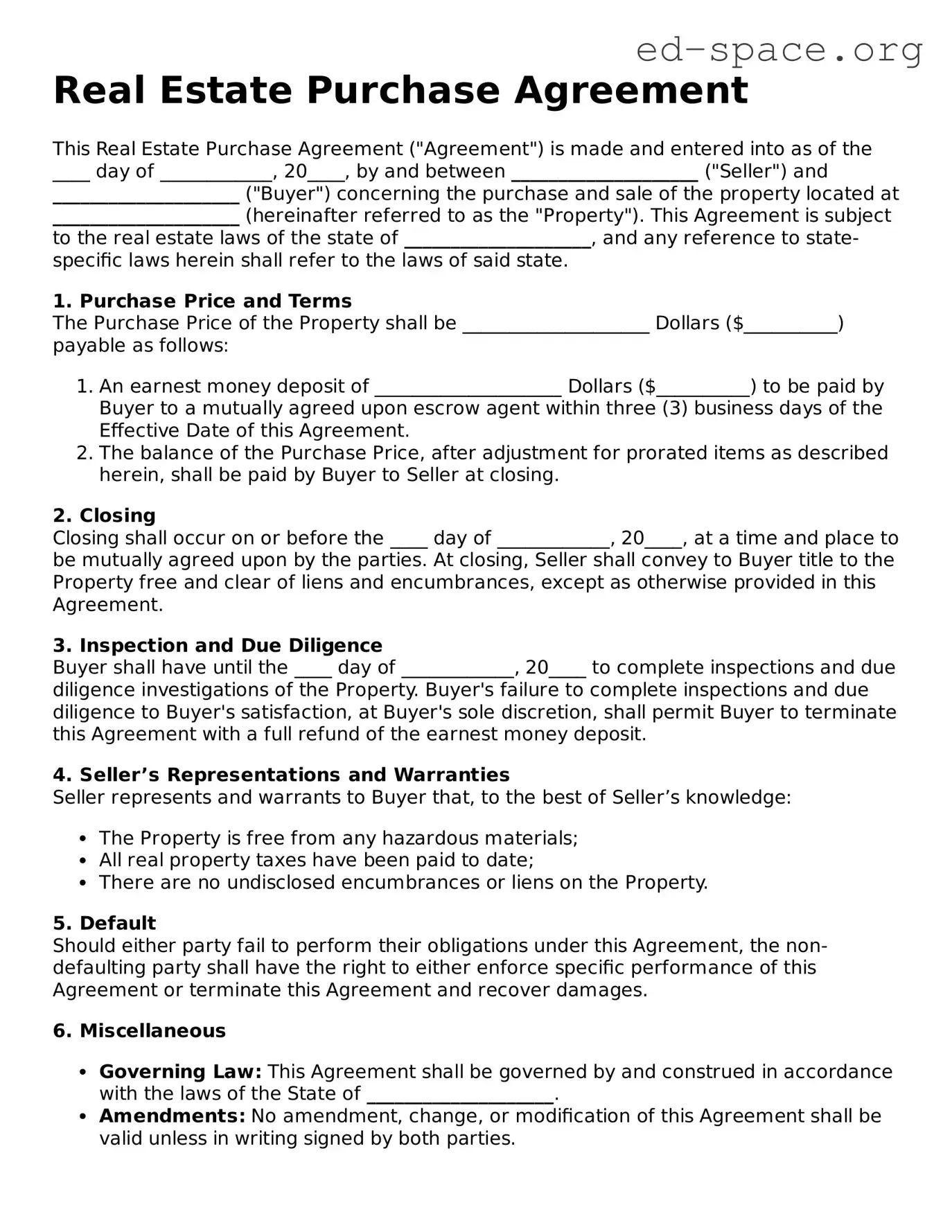What is a Real Estate Purchase Agreement?
A Real Estate Purchase Agreement is a legally binding document between a seller and a buyer concerning the sale and purchase of real estate property. This comprehensive contract outlines the terms and conditions of the sale, including the purchase price, property description, financing details, closing conditions, and any contingencies that must be met before the transaction can be completed.
Why is a Real Estate Purchase Agreement important?
This agreement serves as the blueprint for the transaction, ensuring both parties understand their obligations and the timeline for the sale. It protects the rights of both the buyer and the seller, providing a clear path to transfer ownership of the property. By detailing the conditions that must be satisfied and establishing the responsibilities of each party, it helps prevent misunderstandings and legal disputes, facilitating a smoother transaction.
What should be included in a Real Estate Purchase Agreement?
A robust Real Estate Purchase Agreement should include, but not be limited to, the following key components: the legal names of both parties, the detailed description of the property being sold, the purchase price and terms of the sale, any earnest money deposits, financing details, inspection rights and results, closing date and location, allocation of closing costs, and any specific contingencies such as the buyer's need to obtain financing or the sale of their current home.
How does a contingency work in a Real Estate Purchase Agreement?
Contingencies are conditions written into the agreement that must be met for the sale to proceed. These conditions provide a safety net for the buyer or seller. For example, a common contingency is the buyer's ability to secure financing by a certain date. If the condition is not met, the party benefiting from the contingency can opt to terminate the agreement, often without penalty. This structure ensures that significant commitments are only made with a clear path to fulfillment.
Can either party back out of a Real Estate Purchase Agreement?
Once a Real Estate Purchase Agreement is signed, it becomes a legally binding document. However, the ability for a party to back out depends on the terms outlined in the agreement itself and the occurrence of specific conditions, such as failure to meet a contingency. If a party simply changes their mind without legal grounds to terminate the agreement under its terms, they may face legal repercussions or financial losses, such as forfeiting the earnest money deposit.
What happens if there are disputes over the Real Estate Purchase Agreement?
Disputes over a Real Estate Purchase Agreement are ideally resolved through mediation or arbitration, as specified in the agreement’s dispute resolution clause. This approach often saves time and money versus litigating the dispute in court. However, if the parties cannot resolve their differences through alternative dispute resolution methods, litigation may be necessary. In such cases, each party should seek representation by a qualified attorney to navigate the complexities of real estate law and advocate on their behalf.
